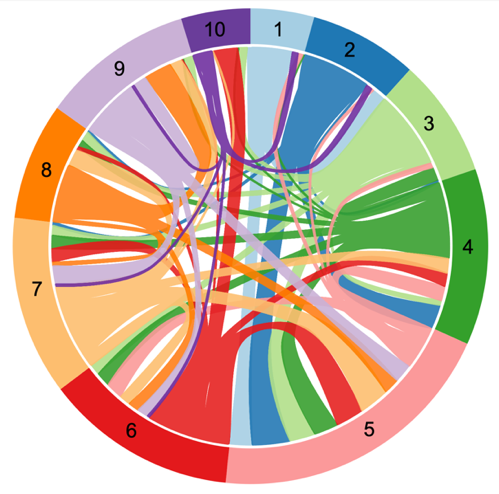Interactive exercise tasks in physics education
Comparison between online, face-to-face and self-study instruction
DOI:
https://doi.org/10.25369/ll.v2i2.53Abstract
Learning is an active and constructive process. Interactive tasks enable learner activation in any teaching format. It is an open question whether there are differences in the task success and the change of professional knowledge when learning with interactive tasks under different teaching formats. It is also open to what extent prospective teachers can imagine creating such tasks themselves with the help of a tool and using them as teaching aids in their later professional lives.
An interactive task set was taught using three different methods and evaluated. The sample (N=66) consisted of student teachers of physics. They worked on a learning path with interactive tasks in order to acquire educational knowledge and at the same time to get to know a tool for the development of interactive tasks. The results showed no significant differences in task success and professional knowledge between online and face-to-face teaching. However, self-study learners showed significantly shorter completion times, more chaotic learning behaviour, lower task success, and lower increase in TPACK. The students' acceptance of interactive tasks and the exemplary tool increased in all groups as a result of working with the tasks.
Downloads
References
Kenner, A. (2022). Shift from technics to didactics - Lehren in Zeiten von Corona. Eine qualitative Untersuchung unter Hochschullehrenden. In U. Fahr, A. Kenner, H. Angenent, & A. Eßer-Lüghausen (Hrsg.), Hochschullehre erforschen, Diversität und Bildung im digitalen Zeitalter (S. 409-427), Wiesbaden: Springer.
https://doi.org/10.1007/978-3-658-34185-5_22
Watzka, B., Richtberg, S., Schweinberger, M., & Girwidz, R. (2019). Interaktives Üben mit H5P. Naturwissenschaften im Unterricht - Physik 30 (173), 22-27.
Santos, D. R., Cordon, C. R., & Palomo-Duarte, M. (2019). Extending H5P Branching Scenario with 360 scenes and xAPI capabilities: A case study in a local networks course. In 2019 International Symposium on Computers in Education (SIIE) (pp. 1-6). IEEE. https://ieeexplore.ieee.org/stamp/stamp.jsp?arnumber=8970117
https://doi.org/10.1109/SIIE48397.2019.8970117
Torrance, M. & Houck, R. (2017). Making Sense of xAPI, TD AT Work Guide, ASTD Press.
Bonwell, C. C., & Eison, J. A. (1991). Active learning: Creating excitement in the classroom. Washington: The George Washington University, School of Education and Human Development. https://files.eric.ed.gov/fulltext/ED336049.pdf
Prince, M. (2004). Does Active Learning Work? A Review of the Research, Journal of Engineering Education, 93(3), 223-231. https://onlinelibrary.wiley.com/doi/10.1002/j.2168-9830.2004.tb00809.x
https://doi.org/10.1002/j.2168-9830.2004.tb00809.x
Hake, R. (1998). Interactive-Engagement vs. Traditional Methods: A Six-Thousand-Student Survey of Mechanics Test Data for Introductory Physics Courses, American Journal of Physics, 66(1), 64. https://aapt.scitation.org/doi/10.1119/1.18809
https://doi.org/10.1119/1.18809
Pereira, D. S., Valdeni, J., Tarouco, L. M. R., Jardim, R. R., Rocha, P.S., & Santos, F. (2019). HTML5 Authoring Tool to Support the Teaching-Learning Process: A Case Study with H5P Framework. International Journal for Innovation Education and Research, 7(2), 92-103. https://scholarsjournal.net/index.php/ijier/article/view/1325
https://doi.org/10.31686/ijier.vol7.iss2.1325
Chen, L., Manwaring, P., Zakaria, G., Wilkie, S., & Loton, D. (2021). Implementing H5P online interactive Activities at scale, ASCILITE 2021, 81-92. https://2021conference.ascilite.org/wp-content/uploads/2021/11/ASCILITE-2021-Proceedings-Chen-Zalaroa-Wilkie.pdf
https://doi.org/10.14742/ascilite2021.0112
Rama Devi, S., Subetha, T., Aruna Rao, S.L., & Morampudi, M.K. (2022). Enhanced Learning Outcomes by Interactive Video Content-H5P in Moodle LMS. In: V. Suma, Z. Baig, S. Kolandapalayam Shanmugam, & P. Lorenz (Eds), Inventive Systems and Control. Lecture Notes in Networks and Systems, vol 436. Singapore: Springer. https://link.springer.com/chapter/10.1007/978-981-19-1012-8_13
https://doi.org/10.1007/978-981-19-1012-8_13
Unsworth, A. J., & Posner, M. G. (2022). Case Study: Using H5P to design and deliver interactive laboratory practicals. Essays in Biochemistry, 66(1), 19-27. https://pubmed.ncbi.nlm.nih.gov/35237795/
https://doi.org/10.1042/EBC20210057
López, S. R. R., Ramírez, M. T. G., & Rodríguez, I. S. R. (2021). Evaluation of the implementation of a learning object developed with h5p technology. Vivat Academia, 24(154), 1-23. https://www.proquest.com/docview/2509034841?pq-origsite=gscholar&fromopenview=true
Sinnayah, P., Salcedo, A., & Rekhari, S. (2021). Reimagining physiology education with interactive content developed in H5P. Advances in Physiology Education, 45(1), 71-76. https://journals.physiology.org/doi/full/10.1152/advan.00021.2020
https://doi.org/10.1152/advan.00021.2020
Wilkie, S., Zakaria, G., McDonald, T., & Borland, R. (2018). Considerations for designing H5P online interactive activities. Open Oceans: Learning without borders. Proceedings ASCILITE, 543-549.
Wicaksono, Setiarini, Novawan, & Ikeda (2021). The Use of H5P in Teaching English, Advances in Social Science, Education and Humanities Research, 514, 227-230. https://www.atlantis-press.com/proceedings/icoship-20/125950249
https://doi.org/10.2991/assehr.k.210101.049
MacFarlane, L.-A. & Ballantyne, E. (2018). Bringing videos to life with H5P: Expanding experiential learning online, Proceedings of the 2018 Atlantic Universities' Teaching Showcase, 22, 28-33. https://ojs.library.dal.ca/auts/article/view/10186
Mir, K., Iqbal, M. Z., & Shams, J. A. (2021). Investigation of Students' Satisfaction about H5P Interactive Video on MOODLE for Online Learning, International Journal of Distance Education and E- Learning, 7(1), 71-82. http://irigs.iiu.edu.pk:64447/ojs/index.php/IJDEEL/article/view/2228
https://doi.org/10.36261/ijdeel.v7i1.2228
Thurner, S., Schön, S., Schirmbrand, L., Tatschl, M., Teschl, T., Leitner, P., & Ebner, M. (2022). An exploratory mixed-method study on H5P videos and video related activities in a MOOC environment, International Journal of Technology-Enhanced Education, 1(1), 1-18. https://www.igi-global.com/article/an-exploratory-mixed-method-study-on-h5p-videos-and-video-related-activities-in-a-mooc-environment/304388
https://doi.org/10.4018/IJTEE.304388
Santos, D. R., Cordon, C. R., & Palomo-Duarte, M. (2019). Extending H5P Branching Scenario with 360º scenes and xAPI capabilities: a case study in a local networks course, 2019 International Symposium on Computers in Education (SIIE), 1-6. https://ieeexplore.ieee.org/document/8970117
https://doi.org/10.1109/SIIE48397.2019.8970117
Roth, J. (2015). Lernpfade - Definition, Gestaltungskriterien und Unterrichtseinsatz. In J. Roth, E. Süss-Stepancik & H. Wiesner (Hrsg.), Medienvielfalt im Mathematikunterricht. Lernpfade als Weg zum Ziel (S. 3-25). Wiesbaden, Springer Spektrum.
https://doi.org/10.1007/978-3-658-06449-5_1
Pöhler, B. (2018). Konzeptuelle und lexikalische Lernpfade und Lernwege zu Prozenten. Wiesbaden: Springer Spektrum.
https://doi.org/10.1007/978-3-658-21375-6
Mayer, P., Watzka, B., & Girwidz, R. (2021). Fortbildung zur Steigerung des Akzeptanzverhaltens gegenüber Multimediaanwendungen im Physikunterricht, PhyDid A 1/20, 26-39. http://www.phydid.de/index.php/phydid/article/view/1095
Hattie, J. (2013). Lernen sichtbar machen. Baltmannsweiler.


